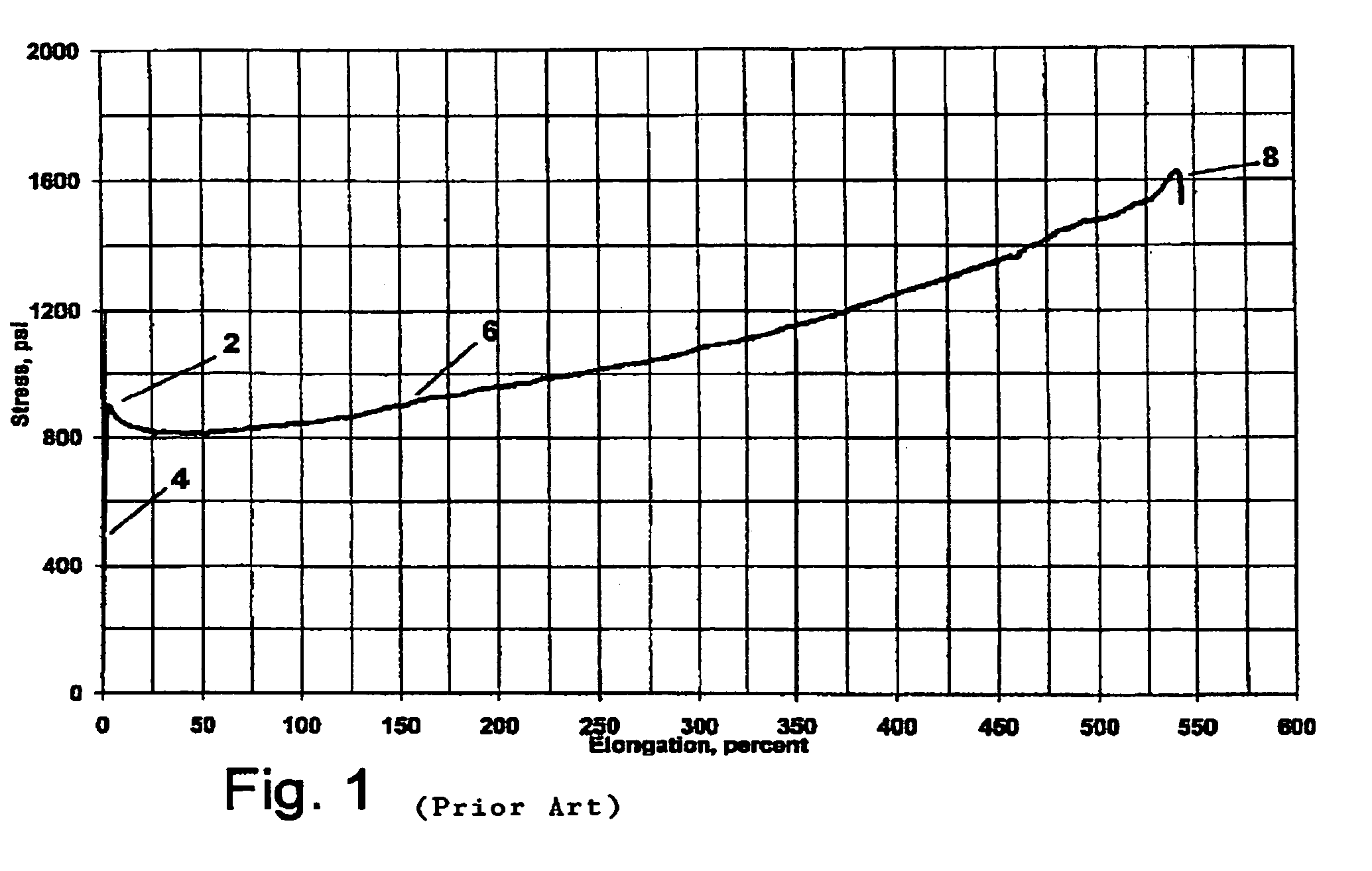Stretchable thermoplastic labels on cryogenic containers
a thermoplastic label and stretchable technology, applied in the direction of identification means, seals, instruments, etc., can solve the problems of limited utility, 7604fp label peeling was more problematic, and the label could only be manually marked
- Summary
- Abstract
- Description
- Claims
- Application Information
AI Technical Summary
Benefits of technology
Problems solved by technology
Method used
Image
Examples
example 1
Laser-Printable Vinyl Label that Fails Cryogenic Test
[0086]Surprisingly, some vinyl labels that exhibit substantial elongation before breakage at room temperature may still peel away from cryovials following immersion in liquid nitrogen regardless of the orientation of the label on the vials. For example, a 0.006 inch thick semi-transparent vinyl label sheet consisting of a 4 mil vinyl facestock with a laser-printable topcoat, and a 2 mil permanent acrylic adhesive (designated V-606) was fabricated for Applicant by FlexCon Inc. (Spencer, Mass.) and was tested for stretch-elongation at room temperature. The manufacturer has designated this label as Compucal V400H Clear MT / C-350 V-60691 PRT PFW. Its facestock (V400H) is described as a calendered vinyl. Test results provided by the manufacturer indicated between 150% and 250% elongation before breakage in the MD and the TD.
[0087]Samples of this label material were laser-printed and a variety of label sizes and shapes were cut and mount...
example 2
Laser-Printable Vinyl Labels that Pass Cryogenic Test When Oriented in One Direction on Cryovial
[0088]Surprisingly, vinyl labels with somewhat reduced elongation before breakage at room temperature, and coated with a somewhat less aggressive waterproof acrylic adhesive (measured by 180 degree peel strength on a polypropylene surface), performed better in cryogenic tests than those labels in Example 1. This was evidenced by the absence of label edge lifting or peeling from polypropylene cryovials and microcentrifuge tubes (identical to those used in Example 1) following immersion in liquid nitrogen. However, Applicant observed that the vinyl facestock material (soft flex PVC) used in these new labels was considerably softer and more compliant than that incorporated into the labels of Example 1. This difference may be attributable to a difference in the amount and / or type of plasticizer used in the PVC. Also, as evidenced below, selecting the correct orientation for placing these viny...
example 3
Laser-Printable Vinyl Labels that Pass Cryogenic Test when Oriented in Either the MD or the TD Direction on Cryovial
[0092]Vinyl labels differing from those used in Example 2 only in the type of permanent acrylic adhesive applied during the manufacture of the labels were prepared by Emtech Emulsion Technologies (Medina, Ohio). Instead of applying 1.0 mil of the P1400 adhesive, the manufacturer applied 1.0 mil of P1480 tackified acrylic adhesive. The P1480 adhesive is somewhat softer than P1400, and the peel adhesion tests by the manufacturer (per the standard TLMI Method) showed that adhesion of P1480 (to a standard stainless steel panel) is over twice as great as that of P1400 (5.0 lbs / inch versus 2.2 lbs / inch). Both P1400 and P1480 are recommended by the manufacturer for adhesion to low surface energy plastics such as polypropylene and polyethylene. Since the P1480 adhesive is somewhat softer and more prone to oozing under pressure and / or heat than P1400, it was not recommended by ...
PUM
| Property | Measurement | Unit |
|---|---|---|
| Fraction | aaaaa | aaaaa |
| Fraction | aaaaa | aaaaa |
| Thickness | aaaaa | aaaaa |
Abstract
Description
Claims
Application Information
 Login to View More
Login to View More - R&D
- Intellectual Property
- Life Sciences
- Materials
- Tech Scout
- Unparalleled Data Quality
- Higher Quality Content
- 60% Fewer Hallucinations
Browse by: Latest US Patents, China's latest patents, Technical Efficacy Thesaurus, Application Domain, Technology Topic, Popular Technical Reports.
© 2025 PatSnap. All rights reserved.Legal|Privacy policy|Modern Slavery Act Transparency Statement|Sitemap|About US| Contact US: help@patsnap.com



